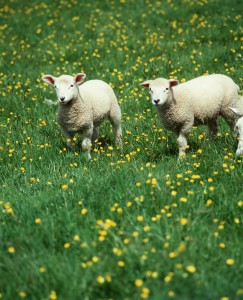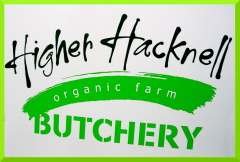This Halloween weekend is the time when we make cider, a special ingredient for the wellbeing of farm life at Higher Hacknell! It’s our final harvest of the year, now that all the other crops -the hay and silage, the barley and wheat and then the potatoes-are stored away.
It’s been a very fruitful autumn with good pickings of mushrooms, blackberries and even wild cherries earlier on, and the grass has kept growing till now so the animals have been able to stay out grazing. Like most livestock farmers though, we are pretty worried though about the amount of forage-hay and silage- that we have for winter feeding this year. Due to the dry spring the yields were very low and winter fodder is in short supply and very expensive, especially organic, if we find we have to buy in extra. So this good autumn weather has done the lambs and the cattle well and we are hoping it’s not going to be a long hard winter!
Cider making also marks the start of the festive season, though even festivities involve work around here! We’ll be picking up the apples in the cider orchard, crushing them between the cogs of the chipper and building a ‘cheese’, layers of apple and straw, on the old press. It takes about 4 tons of apples to build the cheese which should produce about 3 barrels of juice/cider. But friends, neighbours and family help to make it an enjoyable job and kick off the winter season ahead with the odd glass or two of the amber nectar!
Our Christmas range of meat is available to order now, and I’m very happy to discuss what you’d like, either by phone or on the website. Bronze free range organic turkeys range in size from small (about 4.5-5.9kg) to medium (about 6-7kg) and large (8-10kg). I usually recommend about 500g per portion, so a 5kg turkey would feed 10 for just one meal or 5-6 people for Christmas Dinner and some cold for Boxing Day. For a smaller family, goose has great flavour and range in size from 4-6kg, but there is less meat on them than on a turkey.
If you want a change from poultry, sirloin joints and rib of beef on the bone are a real treat for the Christmas table. If you are ordering beef on the bone you can choose the size from 1,2 3 to 4 bones. A 4 bone rib of beef will weigh about 6 or 7 kilos and feed a big crowd, and 4 bone sirloin joint would be a bit smaller, about 5 kilos. You can also have these joints off the bone and rolled which makes them easier to carve.
The other essentials for the Christmas feast are hams and gammons-all home cured here at our farm butchery, and our dry cured bacon. Keith the Higher Hacknell butcher makes delicious sausages and chipolatas, as well as sausagemeat for stuffing, which are free of preservatives as well as being free range organic.
I’ve had several people asking me lately about how our animals are killed, so if you don’t mind me bringing the subject up-I know some people prefer not to think about these things, we’d like to be open to all your questions. Tim takes the cattle and lambs to a small local abattoir in our own trailer, which is about 40 minutes drive. The animals are unloaded and slaughtered straight away so there is no waiting around and getting stressed in a large lairage. They are stunned and slaughtered under the supervision of a ministry vet who also checks the welfare and health of the animals. The carcasses are then dealt with and cooled in a cold store and myself or keith our butcher collects them the next day when they are brought back to hang in our cold store at the farm butchery here. The beef is usually hung for 3 weeks or more on the bone and the lamb for a week to 10 days. Pork, reared to organic standards by a couple of local farmers is also killed in a nearby abattoir, usually the same one, and in the same way. The chickens are killed at a different abattoir situated on a farm about 12 miles from here. Tim and I catch the chickens and we take them into the abattoir where they are also stunned, killed and dressed under supervision of the vet before bringing them back here. The turkeys are killed and dryplucked on farm and hung for a few days before they are dressed.
For more information about our Christmas range of organic meat or about our farming, do get in touch.
We look forward to hearing from you soon.
Best Wishes from Tim, Jo and all at Higher Hacknell Farm


